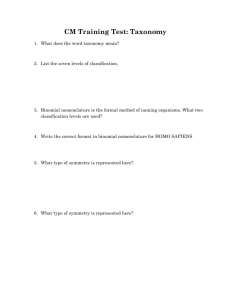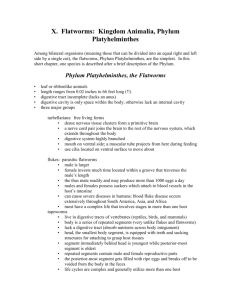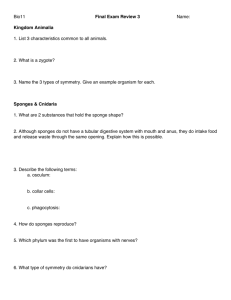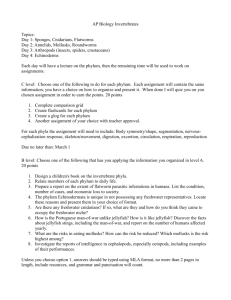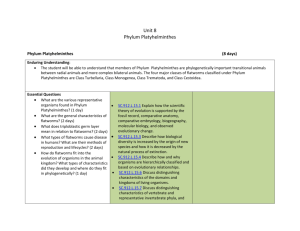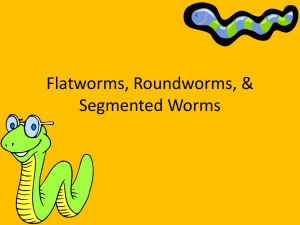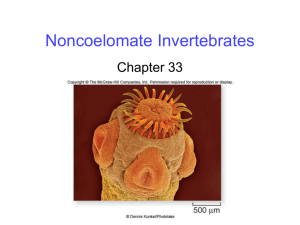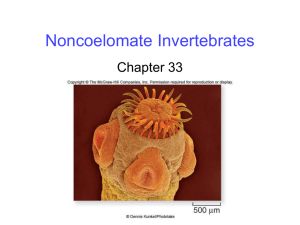Chapter 22
advertisement
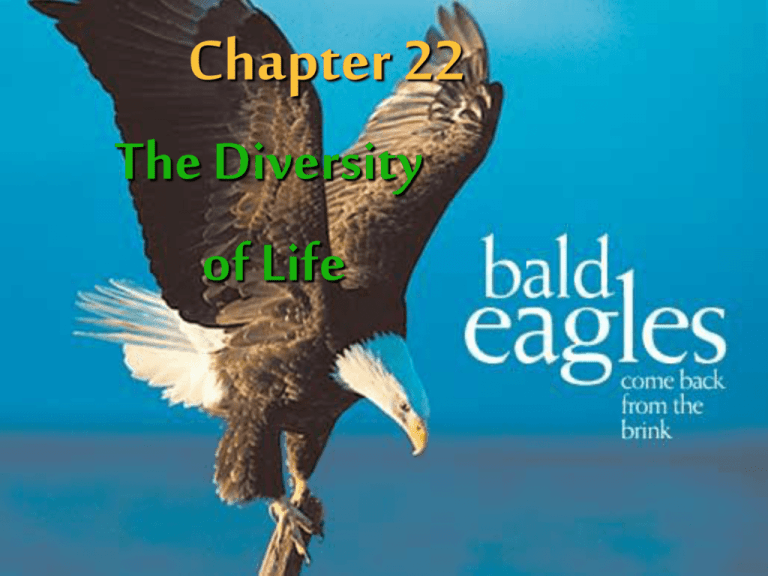
Chapter 22 The Diversity of Life (V) Kingdom Animalia 9 Major Phyla: •Multicellular •Ingests food http://home.teleport.com/~amobb/biology/animals.html http://animaldiversity.ummz.umich.edu/site/index.html (V) Kingdom Animalia (V) Kingdom Animalia (V) Kingdom Animalia 22.1 Overview of the Animal Kingdom Animals are defined by these characteristics: 1. Are multicellular (diploid) with tissues arranged into organs and organ systems. 2. Are aerobic and heterotrophic. 3. Reproduce sexually, and in some cases asexually, or both. 4. Most are motile during at least part of their life cycle. 5. Life cycles include a period of: embryonic development; germ tissue layers (ectoderm, endoderm, mesoderm) 6. Are Vertebrates or Invertebrates 22.1 Overview of the Animal Kingdom Your Turn to teach • • • • • Body Plans Type of Gut Tissue layers Body Cavities Segmentation • Phylum Characteristics – Structurally • Numbers of Species • Etc Body Symmetry Body Symmetry - the body plan of an animal, how its parts are arranged Body Symmetry Body Symmetry - the body plan of an animal, how its parts are arranged 1. Asymmetry (sym =with, together, metry = measure) no pattern ,no central axis 2. Radial symmetry (radia = spoke, radius;) do have distinct top and bottom sides, but have no distinct left and right. 3. Bilateral symmetry (bi = two; later = side) do have distinct left and right sides, Symmetry Positional terminology • • • • anterior - toward the head posterior - toward the tail dorsal - back side ventral - belly side Blastopore One way Digestive System Speciation P o p u l a t i o n Speciation Invertebrates 1. 2. 3. 4. 5. 6. 7. Sponges Cnidarians -Coelenterates Flatworms - Platyhelminthes Annelids–Segments Galore Mollusks, classes? Roundworms - Nematods Arthropods—The Most Successful Animals • Crustaceans • Spiders • Insects 8. Echinoderms Vertebrates • Chordates P o p u l a t i o n Porifera •Sponges •Simplest of all animals •No true organ systems •8000 sp. •Sessile •Filter feeders •Asexual and sexually reproduction Phylum: Cnidarians (Coelenterates) • 11,000 sp. • Two cell layers thick • Hollow body cavity with one opening. • Ex: Hydra, coral Jellyfish, anemone, Portuguese man of war Phylum: Cnidarians (Coelenterates) Phylum: Cnidarians (Coelenterates) Jellyfish Sea anemone, hydra Coral, Platyhelminthes, (flatworms) • 15,000 sp. • Flatworms, tapeworms, flukes • Bi-laterally symmetrical • 3 layers (ectoderm, mesoderm, endoderm,) • Have distinct functioning systems. • Motile • Mostly parasitic • Predominantly hermaphroditic • Primitive gut or gut absent • Asexual and Hermaphrodites Platyhelminthes, (flatworms) Platyhelminthes, (flatworms) http://www.umanitoba.ca/faculties/science/zoology/faculty/horn/b101/lectures/animdiv3/ Phylum: Nematoda, (roundworms) Phylum: Nematoda, (roundworms) •20,000 sp. •Roundworms, Trichnosis •Round unsegmented worms •Parasitic •Has a complex life cycle Nematodes Life Cycle Introduction to . Arthropods . . . the REAL rulers of the Earth Introduction to Arthropods . . . the REAL rulers of the Earth. • • • • Segmented body Jointed appendages (legs) Exoskeleton (chitin) Ex: Grasshopper Spiders Lobster, Shrimp, Barnacles Major Classes Crustaceans Insecta Arachnida Chilipoda Diploda Barnacles “Ouchies” Annelids, Ex: Earthworm Leech, sandworm marine worm • Worms with segmented bodies. • Openings at both ends. •One digestive System •Thin flexible cuticle covering the body allowing for flexible movement and gas exchange, •setae allow movement, 4pr/segment . •Approximately 15, 000 species •Hermaphrodites and separate sexes Earthworms Phylum Mollusks •soft bodied animals, •generally enclosed in a hard, protective shell. •The shell maybe one unit, two hinged together or even eight in a row •In most species this mantle covers and shelters its gills. •The body plan of a Mollusca is divided into: • the head •strong muscular foot •visceral mass. organ systems are well developed •Mollusks are also unique because of their specialized tongue called radulla. Phylum Mollusks • • • • Gastropod: snails, slugs, nudibranch Chitons: chiton Bivalves: oysters, clams Cephalopod: Squid octopus, Examples Phylum Echinoderms (Spiny / skin) all starfish, sea urchins, sand dollar, sea cucumber sea cucumber Brittle star Sea Biscuit Sand $ Phylum Echinoderms •7000 species, 15000 including fossil records •calcareous endoskeleton composed of separate plates •radial symmetry •water vascular system ("tube feet") •decentralized nervous system •Regenerative, sexual and asexual •gut complete •Marine Sun Star
